Mirella Sichirollo Patzer's Blog, page 26
November 12, 2013
The 10 Most Evil Women in the History of the World
This video gives me the creeps. It's hard to fathom how a mother can murder her own children and loved ones. But here are a few that obviously lacked the mothering and nurturing instincts that the rest of us were born with and that God blessed us with.


















Published on November 12, 2013 08:11
November 8, 2013
Book Tour - Illuminations by Mary Sharatt
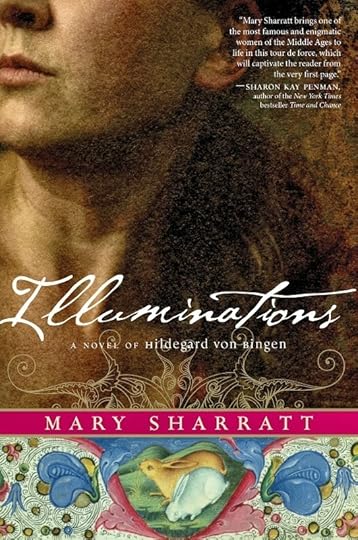
Skillfully weaving historical fact with psychological insight and vivid imagination, Illuminations brings to life one of the most extraordinary women of the Middle Ages: Hildegard von Bingen, Benedictine abbess, visionary, and polymath.
Offered to the Church at the age of eight, Hildegard was expected to live in silent submission as the handmaiden of a renowned, disturbed young nun, Jutta von Sponheim. But Hildegard rejected Jutta's masochistic piety, rejoicing in her own secret visions of the divine. When Jutta died, Hildegard broke out of her prison, answering the heavenly call to speak and write about her visions and to liberate her sisters. Riveting and utterly unforgettable, Illuminations is a deeply moving portrayal of a woman willing to risk everything for what she believed.
Praise for Illuminations
"An enchanting beginning to the story of the perennially fascinating 12th-century mystic, Hildegard of Bingen. It is easy to paint a picture of a saint from the outside but much more difficult to show them from the inside. Mary Sharratt has undertaken this with sensitivity and grace."
—Margaret George, author of Mary, Called Magdalene
"I loved Mary Sharratt’s The Daughters of Witching Hill, but she has outdone herself with Illuminations: A Novel of Hildegard Von Bingen. She brings one of the most famous and enigmatic women of the Middle Ages to vibrant life in this tour de force, which will captivate the reader from the very first page."
—Sharon Kay Penman, author of the New York Times bestseller Time and Chance
"I love Mary Sharratt. The grace of her writing and the grace of her subject combine seamlessly in this wonderful novel about the amazing, too-little-known saint, Hildegard of Bingen, a mystic and visionary. Sharratt captures both the pain and the beauty such gifts bring, as well as bringing to life a time of vast sins and vast redemptions."
—Karleen Koen, author of Before Versailles and the best-selling Through a Glass Darkly
Book Review:
Illuminations
is a novel about Hildegard von Bingen, a woman who lived in the 11th
century who had the gift of prophetic visions. Sickly, she was the tenth child
in a large family. At the age of 8, her mother gave her as an oblate to a young
woman who desired to be an anchorite, Jutta von Sponheim. Together, the two
were sealed in a corner of a monastery to live a pious life. Under Jutta’s
tutelage, Hildegard is taught to read and write, tend a small garden, and interpret
the Bible. Hildegard was forced to watch the extreme and zealously obsessive
religious behaviour of Jutta. All the while, she experiences visions which are
visitations from the Virgin Mary. At first, no one believes her visions and they
are treated with skepticism. So Hildegard kept her visions a secret, but wrote
about them and their meaning in a journal.
The
book is gripping and author Mary Sharrat excels at bringing Hildegard’s
thoughts and experiences to the forefront in a realistic manner. The novels
gives us a look into the religious beliefs of the time, including those who
were considered fanatics and zealots. It is a poignant story of a woman who
suffered deprivation and enclosure, denied the ability to enjoy nature and grow
to womanhood in the outside world. Brilliantly written, I highly recommend this
biographical novel, not only for its historical depiction, but because it is a
darn good tale that holds a reader’s interest from start to finish.
You can purchase the book at the following sites:
Amazon
http://www.amazon.com/dp/0544106539/ref=tmm_pap_swatch_0?_encoding=UTF8&sr=&qid=
Barnes & Noble
http://www.barnesandnoble.com/w/illuminations-mary-sharratt/1110919627?ean=9780544106536
Books A Million
http://www.booksamillion.com/p/Illuminations/Mary-Sharratt/9780544106536?id=5724163155978
Indiebound
http://www.indiebound.org/book/9780544106536
FOLLOW THE BOOK TOUR:
#Illuminations Tour Schedule:
http://hfvirtualbooktours.com/illuminationsvirtualtour

About Mary Sharratt
The author of four critically acclaimed historical novels, Mary Sharratt is an American who lives in the Pendle region of Lancashire, England, the setting for her acclaimed Daughters of the Witching Hill, which recasts the Pendle Witches of 1612 in their historical context as cunning folk and healers. She also lived for twelve years in Germany, which, along with her interest in sacred music and herbal medicine, inspired her to write Illuminations: A Novel of Hildegard von Bingen. Illuminations won the Nautilus Gold Award for Better Books for a Better World and was selected as a Kirkus Book of the Year.
For more information please visit Mary's website and blog.
You can also find her on Facebook and Twitter.









Published on November 08, 2013 04:02
November 4, 2013
The Wickedest Woman of New York - My Notorious Life by Kate Manning
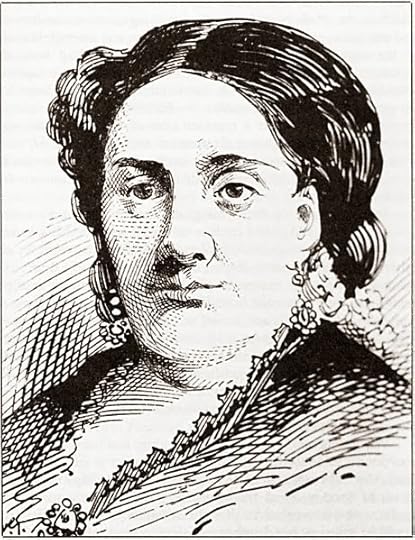
Ann Lohman
(Madame Restell)
Ann Lohman, also known as Madame
Restell, was the most notorious abortionist in New York in the late 1800’s. She was born in Gloucestershire, England to working class parents. When she was
sixteen, she married Henry Summer. Three years later, they immigrated to the
U.S. Not long after they arrived, Henry fell ill and died of yellow fever. Nearly
destitute, Ann struggled to survive and found menial work as a seamstress.
In 1836, Ann met and married a printer
by the name of Charles Lohman, a radical, free thinker, and a man who owned a controversial press. Charles had a brother who worked in a pharmacy. In partnership with her husband
and brother-in-law, Ann developed an interest in women’s medicines and cures
and birth control under the name of Madame Restell. Her business started so
simply at first – via mail order, she sold pills made from opium and herbs that
promised to relieve an obstructed womb and suppress menstruation. A clear and
clever warning on the ads or pill containers clearly stated: Not to be used when pregnant as miscarriage
may occur.” Her small mail-order business thrived. She grew rich and expanded into Boston,
Philadelphia and Providence, R.I. She scandalously drove her fine carriage through Central
Park. A celebrity of the times, the press followed her movements, writing about
her wardrobe, her silk and velvet gowns, her elaborate hats, and ostentatious
five-story house, with its lush gardens and stables.
With so much money coming in, she could afford to expand
her business even more. In case the pills did not work, Lohman
soon offered procedures in her offices charging anywhere between $20 to $100,
depending on the ability of the woman to pay. Her office became a place for
poor, pregnant women to find help or refuge, where babies could be delivered or
placed for adoption, and where they could be educated about birth control or
sex education. As her notoriety grew, so did her business and fame. Her
clientele increased and many women of the upper classes became regular customers.
Increasingly, she found herself under attack by the newspaper of the time. Many
refused her advertisements.
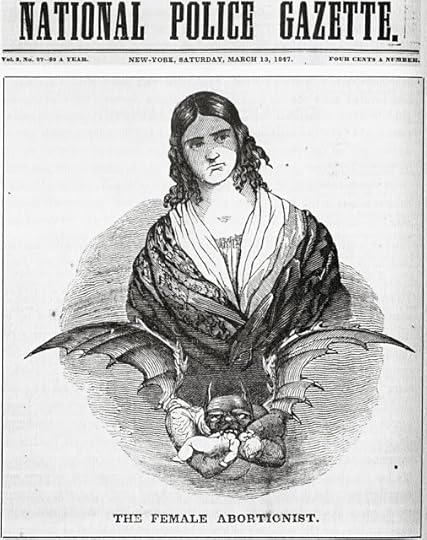
Lohman’s wealth and unrepentant behavior made her a tabloid
favorite. The newspapers called her a hag of misery or a modern thug of
civilized society and the lady of the death’s head and marrow bones. Angry
protests turned into riots as the tide of popularity turned against her. A mob
surrounded Lohman’s house chanting, “Hanging’s too good for her!” and “This
house is built on babies’ skulls.” Ann Lohman’s nemesis was a religious crusader by the name of Anthony
Comstock. He made it his mission in life to fight against abortion. He persuaded
Congress to prohibit the sale or distribution of materials that could be used
for contraception or abortion, or the sending of such materials by mail. As a
special agent of the United States Post Office, Comstock entrapped Lohman by
posing as a husband seeking abortion services for a lady. When she provided him
with some tablets, he returned and arrested her — accompanied by two reporters.
She faced years in jail.
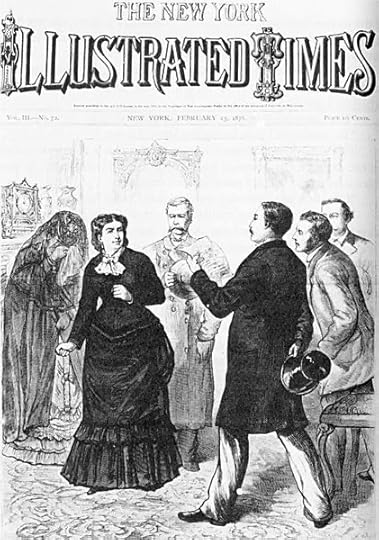
Comstock arresting Restell
Zealous prosecutors began to pursue her despite the fact
that abortion laws were weak and violations difficult to prosecute, but witnesses
were reluctant to come forward and early pregnancy could not be proved. Between 1839 to 1877, Lohman was arrested at several times
and kept in jail for months at a time without bail. Rumors said that there was
a special sewer she had built between her house and the Hudson River to dispose
of bodies. They even blamed her for the famous unsolved murder of a cigar girl.
But all her arrests resulted in only one conviction and she served 1 year in
the penitentiary on Roosevelt Island on misdemeanor charges. No one knows for
certain, but it is believed that she escaped harsher punishment by threatening
to reveal the names of her patients — the mistresses, daughters and wives of
the rich and powerful.

Ann Lohman in her prison cell
Her published letters suggest that she was passionately committed
to the idea of providing reproductive health care to women. No woman was ever
proved to have died at Lohman’s hands. Indeed, testimony in her trials
suggested that Madame Restell was a professional who cared deeply for her
patients, staying with them overnight and nursing them with kind words.
Despondent, fearing the shame that would come upon her family
during a long trial and convinced that another stint in prison would kill her,
Lohman climbed into her marble bathtub on the April morning her trial was to
start, and slit her own throat. She was 66.
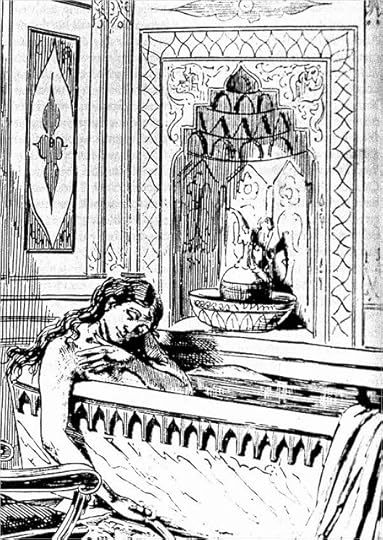
“A bloody ending to a bloody life,” Comstock commented upon
hearing of her death. The newspapers echoed his sentiments. “The end of sin is
death,” wrote The New York Tribune, and The Times editorialized that Lohman’s
death was “a fit ending to an odious career.”
Lohman’s death did not put an end to abortion, nor to the battle
fought over it. The murder of Dr. George Tiller will not accomplish those ends
either.
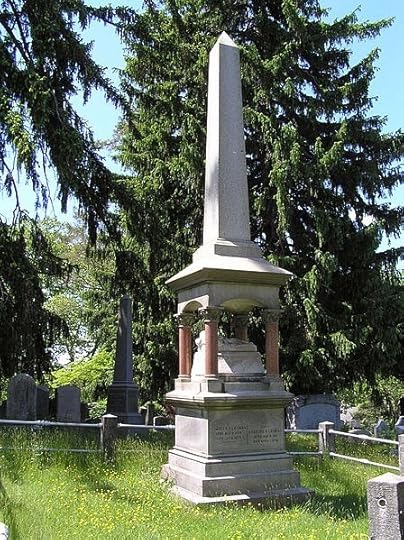
Ann's Grave
_______________________________________________
My Notorious Life
by
Kate Manning
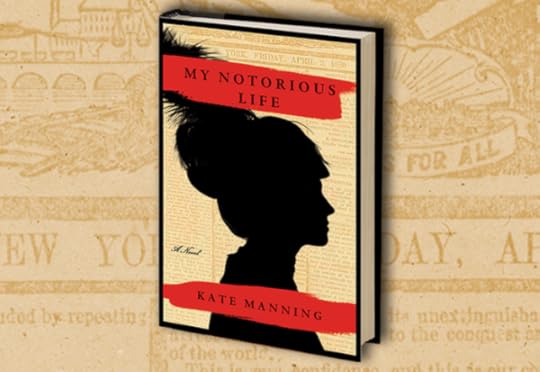
Book Synopsis
A brilliant rendering of a scandalous historical figure, Kate Manning’s My Notorious Life is an ambitious, thrilling novel introducing Axie Muldoon, a fiery heroine for the ages.
Axie’s story begins on the streets of 1860s New York. The impoverished child of Irish immigrants, she grows up to become one of the wealthiest and most controversial women of her day.
In vivid prose, Axie recounts how she is forcibly separated from her mother and siblings, apprenticed to a doctor, and how she and her husband parlay the sale of a few bottles of “Lunar Tablets for Female Complaint” into a thriving midwifery business. Flouting convention and defying the law in the name of women’s reproductive rights, Axie rises from grim tenement rooms to the splendor of a mansion on Fifth Avenue, amassing wealth while learning over and over never to trust a man who says “trust me.”
When her services attract outraged headlines, Axie finds herself on a collision course with a crusading official—Anthony Comstock, founder of the Society for the Suppression of Vice. It will take all of Axie’s cunning and power to outwit him in the fight to preserve her freedom and everything she holds dear.
Inspired by the true history of an infamous female physician who was once called “the Wickedest Woman in New York,” My Notorious Life is a mystery, a family saga, a love story, and an exquisitely detailed portrait of nineteenth-century America. Axie Muldoon’s inimitable voice brings the past alive, and her story haunts and enlightens the present.
My Review
This book is
a must read for every woman. It is a story that takes us into our past; a tale loosely
based on the life of a woman who dedicated her life to address the adversities
arising from childbirth issues. This rag to riches, fictionalized
accounting based on the story of Madame Restell, a notorious abortionist in New
York City gives readers a peak at what it means to be a woman during the late
1800’s.
The story
begins with Axie Muldoon who is an extremely poor child struggling to survive
on the streets of New York. She is rescued by a reverend of the Children’s Aid
Society and soon finds herself taken in by a local doctor and his wife. It is
here that Axie learns about female remedies and midwifery skills.The story
unfolds vividly, realistically, and takes us into the seedier side of New York
and the options women had available to them regarding pregnancies, wanted or
unwanted and its prevention.
I highly
recommend My Notorious Life as a wonderfully poignant novel about a woman who
chose a controversial path in life to come to the aid of needful women. It is a
shocking portrayal of the hardships women once faced regading their bodies,
their sex lives, and the impact of child-bearing. Excellent
biographical historical fiction!









Published on November 04, 2013 10:20
October 31, 2013
Hoyden of the Week

Happy Halloween! For the witch in all of us!
Whatever your driving choice tonight, have fun, and be safe!









Published on October 31, 2013 09:47
October 25, 2013
Hoyden of the Week

Has it been a crazy week for you too? It certainly has for me.
So for all you hoydens out there who have catered to husbands, children, your boss, your neighbour, your parents, and myriad others who demand our time, take a break tomorrow.
Sleep in, read a little, stop to rest and enjoy the coffee. Because before you know it, the phone will ring, friends and family will call, and soon, the week starts all over again with the same hectic pace as the weeks before.









Published on October 25, 2013 17:45
October 11, 2013
Hoyden of the Week
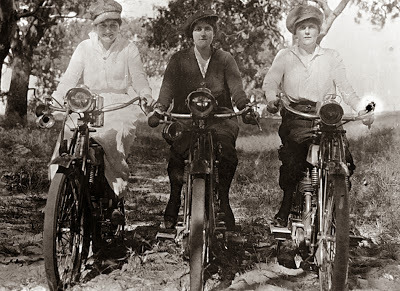
3 motorcycle mamas! And in dresses too!
A reminder to all you hoydens out there to do something fun this weekend with friends and family!
In Canada, this is Thanksgiving weekend, so I wish everyone a happy day shared with family and good food.
And don't forget to work all that turkey off afterwards!









Published on October 11, 2013 09:39
October 4, 2013
Winner of Isabella: Braveheart of France by Colin Falconer

Announcing the winners of the ebook Isabella: Braveheart of France! A big thank you to everyone who took the time to leave a comment for Colin Falconer's latest novel, ISABELLA: BRAVEHEART OF FRANCE.
Congratulations to:
Tara Chevrestt
We will be sending you an email soon!









Published on October 04, 2013 09:32
October 1, 2013
Edgar Allan Poe's Women
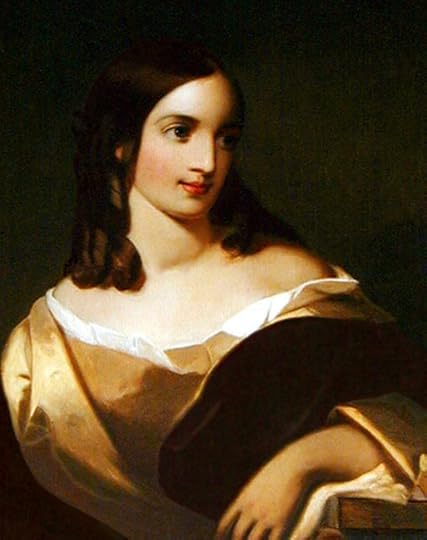
Virginia Eliza Clemm
Virginia Eliza Clemm was seven years old when she met her future husband,
her cousin, Edgar Allan Poe. At the time, Edgar had been discharged from the
army and came to live with the poor family. Little Virginia acted as a
messenger between him and a young woman in the neighborhood he had become
smitten with. Edgar developed a softness of heart for his devoted little cousin.
Edgar left the family to take a job in Baltimore. While there, poor
Virginia’s siblings died and she was left alone with her destitute parents. Protective
over his devoted little cousin, Edgar decided to marry her, but she was far too
young. Neilson Poe, the husband of Virginia’s half-sister, Josephine Clemm, and
newspaper magnate heard about Edgar’s interest in marrying the very young Virginia
and intervened by offering to take her in and educate her. This angered Poe who
saw it as a blatant attempt by his bitterest enemy to keep him and Virginia
apart. So he took pen, a mighty weapon in the hands of such a talented writer,
and wrote a heartfelt, emotional letter to Virginia’s mother and father
pleading that they allow Virginia to make her own decision. In his letter he
offered to take care of them all if they moved to Richmond.
They agreed and Poe married Virginia in
1836. Edgar was 27 and Virginia was 13. They honeymooned in Petersburg,
Virginia. Needless to say, this marriage between first cousins raised more than
an eyebrow. Many believed the couple never consummated the marriage, while
others surmised Edgar waited until his bride was 16 before bedding her. Nevertheless,
but by all accounts, Edgar and Virginia were a very happy, devoted couple. That
is, despite his ever increasing dependence on alcohol and stimulants. On one Valentine’s day, Virginia wrote
a love poem to her beloved husband:
Ever with thee I wish to roam —
Dearest my life is thine.
Give me a cottage for my home
And a rich old cypress vine,
Removed from the world with its sin and care
And the tattling of many tongues.
Love alone shall guide us when we are there —
Love shall heal my weakened lungs;
And Oh, the tranquil hours we'll spend,
Never wishing that others may see!
Perfect ease we'll enjoy, without thinking to lend
Ourselves to the world and its glee —
Ever peaceful and blissful we'll be
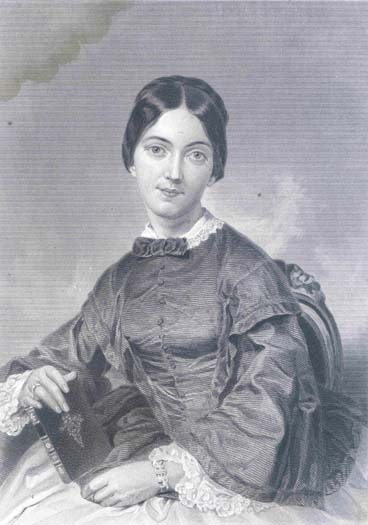
Frances Sargent Osgood
Soon, however, scandal touched their
lives. Edgar began to flirt with a young married woman and poetess named
Frances Sargent Osgood. Aware of the relationship, Virginia reluctantly encouraged
it, often inviting Frances to her home because the woman’s presence seemed to curtail
Edgar’s drinking. So everything was tolerable for a while. After all, Virginia knew
it was best to keep one’s enemies close. This way she could keep a close on the
relationship.
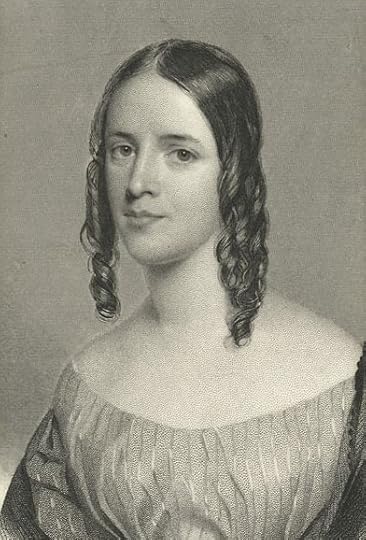
Elizabeth Fries Lummis Ellet
Enter Elizabeth Fries Lummis Ellet, another writer and poet. She became
infatuated with Poe and jealous of Frances. But Edgar had no interest in
Elizabeth. He found her love for him loathsome and did all that he could to
repel it with scorn. He printed many of her poems to him in a journal of which
he edited.
One day,
while visiting Poe, Virginia showed the meddling, spiteful Ellet one of Osgood's
personal letters to Poe and pointed out some questionable paragraphs. Jealous
of Osgood, Ellet took matters into her own hands and contacted her nemesis. She
strongly warned the woman to beware of her indiscretions and asked that her own
letters be returned by Poe. Osgood did what she could to appease the vengeful
Ellet and sent two women to ask Poe for the letters. Angered by their
interference, Poe called the women busy-bodies and told them that Ellet had
better look after her own letters. He then gathered up all
Ellet’s letters and dumped them at her house.
But even with
her letters returned to her, still bent on revenge, Ellet asked her brother,
Colonel Willaim Lummis, to intervene. Lummis, did not believe that Poe had
already returned the letters and threatened to kill him. Hearing this, Poe
requested a pistol from his friend Thomas English so he could protect
himself. But even English didn’t believe Poe had returned the letters and
questioned their existence. Angered at being called a liar, Poe and his
friend came to blows. The fight only sparked more gossip over his affair with Osgood.
Unfortunately
things didn’t end there. Osgood's husband threatened to sue Ellet unless she
formally apologized for her insinuations. This she did, in writing, citing that
the letter Virginia had shown her must have been a forgery by Poe because he
was intemperate and prone to lunacy. Poe’s enemies were only too eager to put
this into print, saying Poe was deranged and insane.
All this
deeply affected poor Virginia and she soon began to receive letters about her
husband’s affair and indiscretions. She strongly believed the letters were
coming from Ellet.
Virginia developed consumption, also known as tuberculosis and her
health declined. Soon, she became bedridden. His wife’s illness made Poe
depressed. He even wrote that her illness made him insane between “long intervals
of horrible sanity.” Virginia’s illness and Poe’s depression drove them into
destitution. He sought solace in alcohol. After her death, Poe went into a tailspin. The loss of his wife was more
than he could bear. He did not care about anything anymore. Alcohol continued
to numb his pain. He regularly visited Virginia's grave, in the dead of night,
in the cold snow. His relationship with Osgood had ended when she returned to
her husband, but Frances believed that Virginia was the only woman Poe truly loved.
THE RAVEN
BY
EDGAR ALLAN POE
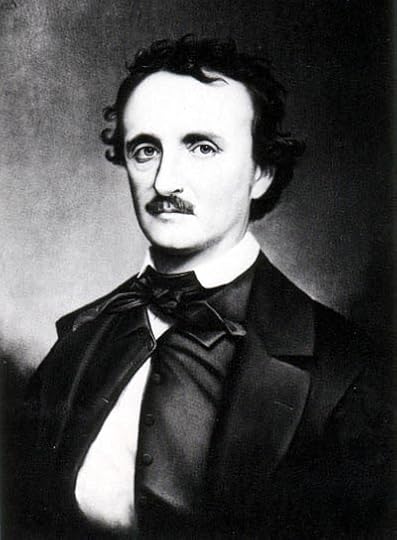
_______________________________________________________________________
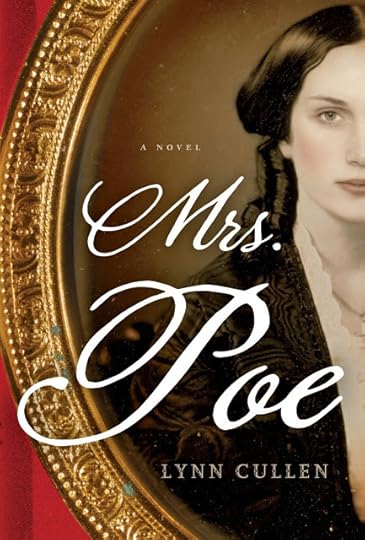
Back Cover Blurb
A writer and his
demons. A woman and her desires. A wife and her revenge
Inspired by literature’s most haunting love triangle, award-winning author Lynn
Cullen delivers a pitch-perfect rendering of Edgar Allan Poe, his mistress’s
tantalizing confession, and his wife’s frightening obsession . . . in this
“intelligent, sexy, and utterly addictive” (M. J. Rose) new masterpiece of
historical fiction.
1845: New York City is
a sprawling warren of gaslit streets and crowded avenues, bustling with new
immigrants and old money, optimism and opportunity, poverty and crime. Edgar
Allan Poe’s “The Raven” is all the rage—the success of which a struggling poet
like Frances Osgood can only dream. As a mother trying to support two young
children after her husband’s cruel betrayal, Frances jumps at the chance to
meet the illustrious Mr. Poe at a small literary gathering, if only to help her
fledgling career. Although not a great fan of Poe’s writing, she is nonetheless
overwhelmed by his magnetic presence— and the surprising revelation that he
admires her work.
What follows is a flirtation, then a seduction, then an illicit affair . . .
and with each clandestine encounter, Frances finds herself falling slowly and
inexorably under the spell of her mysterious, complicated lover. But when
Edgar’s frail wife Virginia insists on befriending Frances as well, the
relationship becomes as dark and twisted as one of Poe’s tales. And like those
gothic heroines whose fates are forever sealed, Frances begins to fear that
deceiving Mrs. Poe may be as impossible as cheating death itself. . . .
My Review
Mrs. Poe by Lynn Cullen is a beautifully rendered story about the two women, Virginia Clemm (wife) and Frances Osgood (mistress) who each deeply influenced Edgar Allan Poe's life. In this biographical historical fiction novel, the author paints a story of deep passionate love, betrayal, duty, and jealousy. Although the novel is entitled Mrs. Poe, I found the stronger focus on Frances rather than Virginia in the story. Both women were well characterized: Virigina weak and sickly, but staunch in her love for her husband, even to the point of bitter jealousy, and Frances who walked a fine line between her broken marriage, the tensely awkward friendship with Virginia, and her passion for Edgar Allan Poe. I liked the women's vastly different personalities - it really added interest throughout the story.
What fascinated me was that the author, whether intentional or not, managed to capture the dark side of all the characters, just like Poe himself did in all his writings. Coupled with lyrical prose and a fascinatingly complicated love triangle, the book held my attention from start to finish, giving me an insight into the tumultuous life of not only the characters, but of writers and the struggles they faced. This is an excellent novel, albeit perhaps with the author's strong personal interpretation of the facts. An excellent book for those that love biographical novels about women set in Victorian times. Definitely recommended.









Published on October 01, 2013 12:30
September 30, 2013
Hoyden of the Week
Published on September 30, 2013 17:02
September 25, 2013
Isabella: Braveheart of France by Colin Falconer
WIN A FREE EBOOK COPY OF
ISABELLA: BRAVEHEART OF FRANCE
(LEAVE A COMMENT WITH YOUR EMAIL ADDRESS TO WIN)
(Contest Ends September 30)
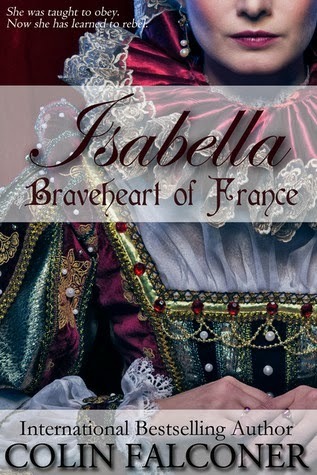
She was taught to obey.
Now she has learned to
rebel.
12 year old Isabella, a French princess marries
the King of England - only to discover he has a terrible secret. Ten long years
later she is in utter despair - does she submit to a lifetime of solitude and a
spiritual death - or seize her destiny and take the throne of England for
herself? Isabella
is just twelve years old when she marries Edward II of England. For the young
princess it is love at first sight - but Edward has a terrible secret that
threatens to tear their marriage - and England apart. Who is
Piers Gaveston - and why is his presence in the king’s court about to plunge
England into civil war? The
young queen believes in the love songs of the troubadours and her own exalted
destiny - but she finds reality very different. As she grows to a woman in the
deadly maelstrom of Edward’s court, she must decide between her husband, her
children, even her life - and one breath-taking gamble that will change the
course of history. This
is the story of Isabella, the only woman ever to invade England - and win. In the
tradition of Philippa Gregory and Elizabeth Chadwick, ISABELLA is thoroughly
researched and fast paced, the little known story of the one invasion the
English never talk about.
Queen Isabella of England was known as a she-Wolf. This
was one queen who was beautiful, diplomatic, and smart! But she was also known
to be ruthless, manipulative, and sometimes heartless.
Her father, King Philip IV of France schooled
her politically and raised her to be wise and cautious. When she was twelve, he
arranged for her to be married to England’s King Edward II. She had no idea the
trouble she would face during ; background-position: initial initial; background-repeat: initial initial; line-height: 150%; margin: 4.8pt 0in 6pt;">
First, there was internal conflict
between the king and his nobles. Second, her husband’s heart belonged to
someone else – a male “mistress” named Piers Gaveston. To Piers, he gave not
only all his love, leaving none for Isabelle, but also much of his wealth in
land, jewels, and titles. This angered the nobles who did much to place
restrictions upon the king.
Isabelle fell in love with Roger Mortimer, who worked with
Isabelle to depose Edward. Edward was murdered and many believe that she even arranged
to have Edward murdered, but that was never proven. Afterwards, Isabella and
Roger spent lavishly as she made some unpopular political decision affection
Scotland.
Meanwhile, Isabelle and Edward’s son, Edward III, grew to manhood.
One of the first things he did was arrest and execute Roger Mortimer, and
seizing control of the country for himself. Isabelle, estranged with her son,
lived alone but in great style.
Author Colin Falconer has brought Isabelle’s story to life in his
latest novel, Isabelle: Braveheart of France. He portrays this fascinating royal
woman as strong and wise. Although history records her as cruel, manipulative,
and ruthless, perhaps that is an unfair moniker considering all that she had to
endure. I can’t imagine her humiliation as her husband flaunted his male lovers.
The author does a wonderful job showing this to the readers.
Wonderful descriptive and succinct prose graces each page of this
biographical novel.









ISABELLA: BRAVEHEART OF FRANCE
(LEAVE A COMMENT WITH YOUR EMAIL ADDRESS TO WIN)
(Contest Ends September 30)

She was taught to obey.
Now she has learned to
rebel.
12 year old Isabella, a French princess marries
the King of England - only to discover he has a terrible secret. Ten long years
later she is in utter despair - does she submit to a lifetime of solitude and a
spiritual death - or seize her destiny and take the throne of England for
herself? Isabella
is just twelve years old when she marries Edward II of England. For the young
princess it is love at first sight - but Edward has a terrible secret that
threatens to tear their marriage - and England apart. Who is
Piers Gaveston - and why is his presence in the king’s court about to plunge
England into civil war? The
young queen believes in the love songs of the troubadours and her own exalted
destiny - but she finds reality very different. As she grows to a woman in the
deadly maelstrom of Edward’s court, she must decide between her husband, her
children, even her life - and one breath-taking gamble that will change the
course of history. This
is the story of Isabella, the only woman ever to invade England - and win. In the
tradition of Philippa Gregory and Elizabeth Chadwick, ISABELLA is thoroughly
researched and fast paced, the little known story of the one invasion the
English never talk about.
Queen Isabella of England was known as a she-Wolf. This
was one queen who was beautiful, diplomatic, and smart! But she was also known
to be ruthless, manipulative, and sometimes heartless.
Her father, King Philip IV of France schooled
her politically and raised her to be wise and cautious. When she was twelve, he
arranged for her to be married to England’s King Edward II. She had no idea the
trouble she would face during ; background-position: initial initial; background-repeat: initial initial; line-height: 150%; margin: 4.8pt 0in 6pt;">
First, there was internal conflict
between the king and his nobles. Second, her husband’s heart belonged to
someone else – a male “mistress” named Piers Gaveston. To Piers, he gave not
only all his love, leaving none for Isabelle, but also much of his wealth in
land, jewels, and titles. This angered the nobles who did much to place
restrictions upon the king.
Isabelle fell in love with Roger Mortimer, who worked with
Isabelle to depose Edward. Edward was murdered and many believe that she even arranged
to have Edward murdered, but that was never proven. Afterwards, Isabella and
Roger spent lavishly as she made some unpopular political decision affection
Scotland.
Meanwhile, Isabelle and Edward’s son, Edward III, grew to manhood.
One of the first things he did was arrest and execute Roger Mortimer, and
seizing control of the country for himself. Isabelle, estranged with her son,
lived alone but in great style.
Author Colin Falconer has brought Isabelle’s story to life in his
latest novel, Isabelle: Braveheart of France. He portrays this fascinating royal
woman as strong and wise. Although history records her as cruel, manipulative,
and ruthless, perhaps that is an unfair moniker considering all that she had to
endure. I can’t imagine her humiliation as her husband flaunted his male lovers.
The author does a wonderful job showing this to the readers.
Wonderful descriptive and succinct prose graces each page of this
biographical novel.









Published on September 25, 2013 10:27








